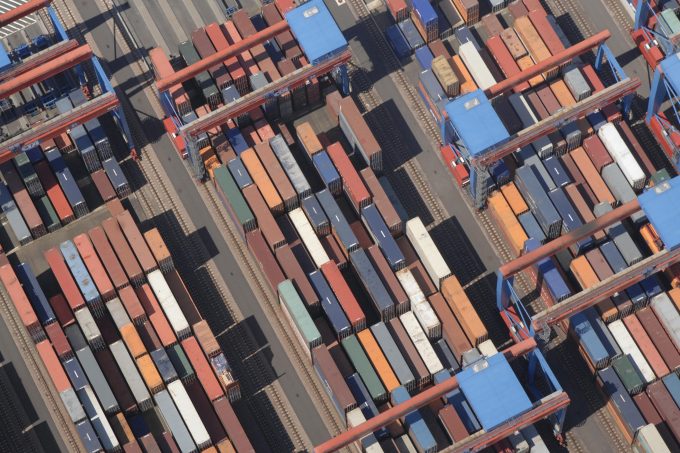Container spot rates have peaked as all major trades see prices fall
There was more evidence in this week’s container port freight markets that peak prices on ...
TFII: SOLID AS USUALMAERSK: WEAKENINGF: FALLING OFF A CLIFFAAPL: 'BOTTLENECK IN MAINLAND CHINA'AAPL: CHINA TRENDSDHL: GROWTH CAPEXR: ANOTHER SOLID DELIVERYMFT: HERE COMES THE FALLDSV: LOOK AT SCHENKER PERFORMANCEUPS: A WAVE OF DOWNGRADES DSV: BARGAIN BINKNX: EARNINGS OUTODFL: RISING AND FALLING AND THEN RISING
TFII: SOLID AS USUALMAERSK: WEAKENINGF: FALLING OFF A CLIFFAAPL: 'BOTTLENECK IN MAINLAND CHINA'AAPL: CHINA TRENDSDHL: GROWTH CAPEXR: ANOTHER SOLID DELIVERYMFT: HERE COMES THE FALLDSV: LOOK AT SCHENKER PERFORMANCEUPS: A WAVE OF DOWNGRADES DSV: BARGAIN BINKNX: EARNINGS OUTODFL: RISING AND FALLING AND THEN RISING

Container spot rates on the two biggest trades, Asia-Europe and the transpacific, fell again this week, exerting yet more pressure on the overstretched balance sheets of ailing ocean carriers.
The Shanghai Containerised Freight Index (SCFI) recorded a cumulative 3.6% spot rate decline on the previous week.
From Asia to North Europe, the SCFI suffered a 6.9% fall of $20 to $271 per teu – a level close to the all-time low recorded just four weeks ago – while to Mediterranean ports, there was a drop of $29 per teu, or 6.6%, to $409.
Between Asia and the US west coast, spot rates tumbled $79 to $770 per 40ft, and for the US east coast, rates were down $84 per 40ft to $1,648.
Unsurprisingly, shippers are becoming reluctant to enter into fixed contracts with carriers. Indeed, data from Oslo-based freight rate analyst Xeneta shows that since the second quarter of 2015, the contract premium paid by shippers has been up to 50% higher than the average spot rates on the trade.
As a result, carriers are increasingly having to rely on spot cargo to fill their ships, rather than as top-up as in the past. And as container lines’ average rates decline, so will their revenue and profitability.
Nonetheless, until the carriers’ GRI (general rate increase) mechanism is eventually outlawed by the European Commission, as expected, most are continuing to announce monthly rate increases on Asia-Europe routes.
This week The Loadstar has seen Asia-Europe GRI announcements from carriers ranging between $550 per teu (Maersk Line) and $900 per teu (OOCL), all effective 1 May.
In the current climate, asking for an increase of $900 per teu is extremely ambitious and it remains to be seen how seriously it will be taken by shippers.
And the increasingly parlous situation of the weaker carriers in the industry is causing some anxiety in the supply chain.
Xeneta’s chief business development officer, Thomas Sorbo, said: “Clearly the current shipper-carrier relationship is unhealthy and needs to be examined by both sides. Prolonged low rates that cause carriers to lose money and threaten their financial stability are as unhelpful over the long-term as are high rates that price the shipper’s products out of their intended markets.”
Andy Cliff, director of UK-based Straightforward Consultancy and a 30-year veteran of the freight forwarding industry, agreed, and bemoaned the white knuckle rollercoaster volatility that has become the new normal in the liner business.
He told The Loadstar: “Heavens only knows the cost of trying to manage this situation as a customer, forwarder or a shipping line every month. What most want are certainty and stability of cost and service – this situation benefits no one.”
Comment on this article